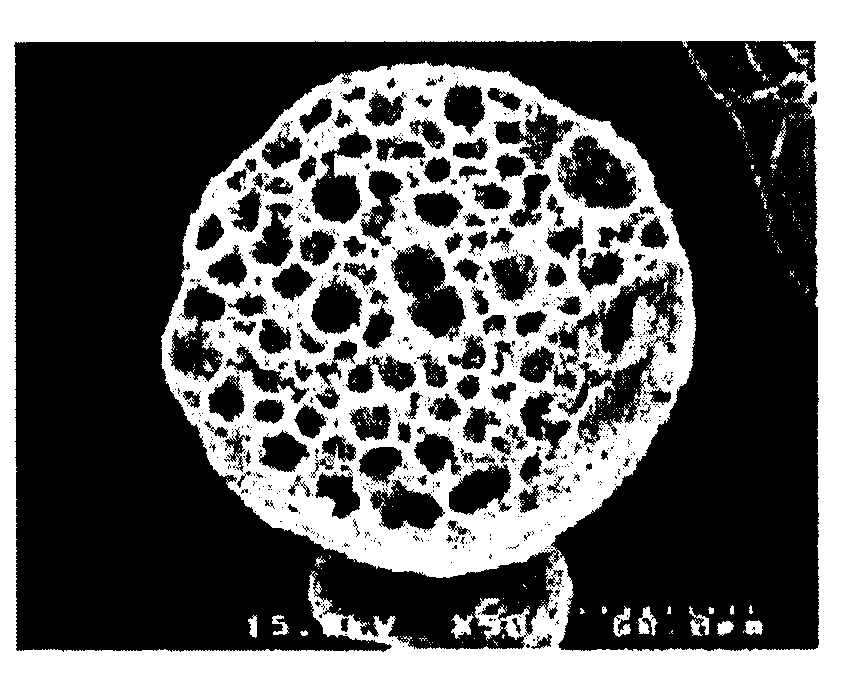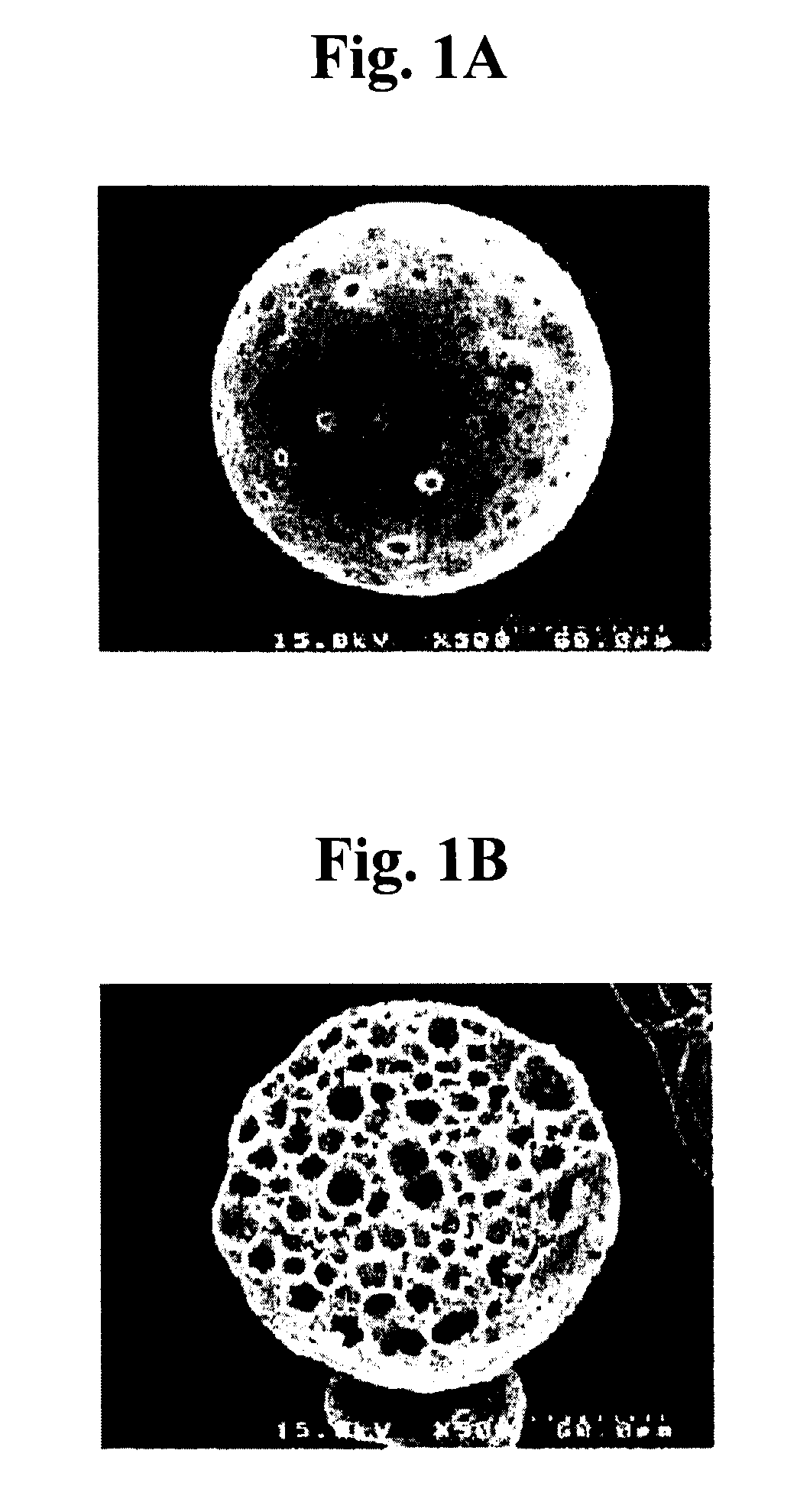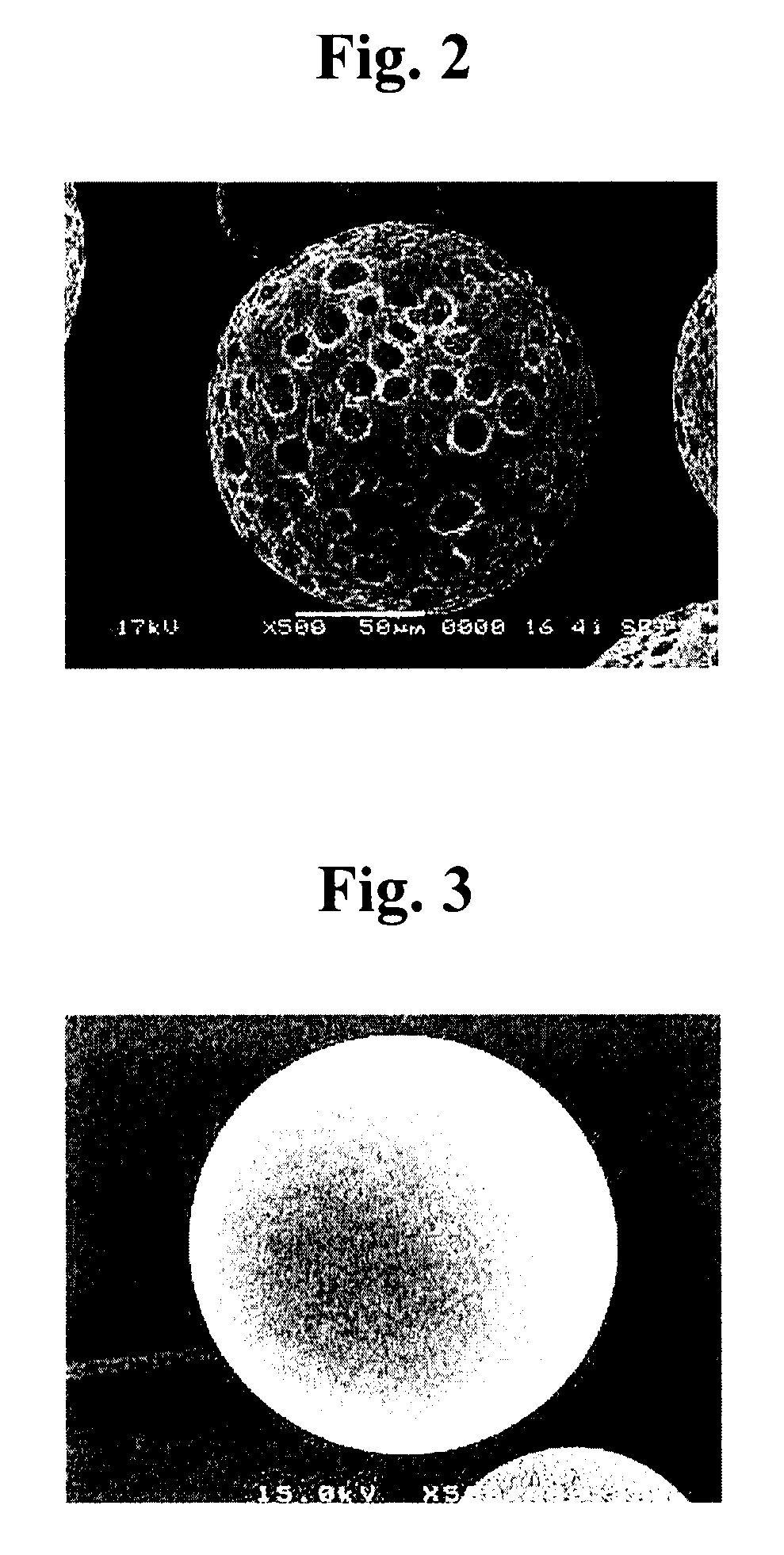Method of preparing covered porous biodegradable polymer microspheres for sustained-release drug delivery and tissue regeneration
a biodegradable polymer and drug technology, applied in the direction of microspheres, capsule delivery, peptide/protein ingredients, etc., can solve the problems of limiting the use of drug delivery, non-porous microspheres releasing drugs at a very low speed, and still not finding effective drug encapsulation, etc., to achieve simple, efficient and eco-friendly, and easy regulation of the pore size of microspheres
- Summary
- Abstract
- Description
- Claims
- Application Information
AI Technical Summary
Benefits of technology
Problems solved by technology
Method used
Image
Examples
example 1
[0049]A lactic acid-glycolic acid copolymer (PLGA, IV: 0.16-0.24 dl / g) (500 mg) containing lactic acid and glycolic acid in a weight ratio of 50:50 was dissolved in 6 ml of methylene chloride. To the resulting solution was added 5 ml of a 30% hydrogen peroxide aquous solution, and then the mixture was stirred at 5,000 rpm for 3 min by means of a homogenizer, to thereby obtain a primary water-in-oil (W / O) emulsion. As an emulsion stabilizer, 300 ml of a 0.2% polyvinyl alcohol (PVA) solution was prepared and stirred at 70 rpm at 40□. While stirring the emulsion stabilizer solution, the primary water-in-oil emulsion was added thereto, to obtain an oil-in-water (O / W) emulsion. When the emulsion was stabilized, catalase was added as a hydrogen peroxide-degrading catalyst and stirred at 70 rpm for 4 hr, resulting in a degradation of the hydrogen peroxide encapsulated within the microsphere simultaneously with the evaporation of methylene chloride. The above prepared microspheres were coll...
example 2
[0051]The covered porous biodegradable PLGA microspheres in which dexamethasone is encapsulated were prepared according to the same method as described in Example 1 except that acetone was used as the organic solvent instead of methylene chloride, and 10 mg of dexamethasone was added as a biologically active material when the primary water-in-oil emulsion was prepared.
[0052]Thus prepared covered porous biodegradable PLGA microspheres showed a pore structure, size and distribution similar to those of Example 1.
example 3
[0053]The covered porous biodegradable PLGA microspheres were prepared according to the same method as described in Example 1 except that 500 mg of lactic acid-glycolic acid copolymer (PLGA, IV: 0.16-0.24 dl / g) containing lactic acid and glycolic acid in a weight ratio of 72:25 was dissolved in 12 ml of chloroform, and then 6 ml of a 40% urea hydrogen peroxide aquous solution was added, followed by the addition of 10 μg of transforming growth factor (TGF), to thereby prepare a primary water-in-oil emulsion, and that potassium permanganate, instead of catalase, was used as a catalyst.
[0054]Thus prepared covered porous biodegradable PLGA microspheres showed a pore structure, size and distribution similar to those of Example 1.
PUM
| Property | Measurement | Unit |
|---|---|---|
| porosity | aaaaa | aaaaa |
| diameter | aaaaa | aaaaa |
| particle size | aaaaa | aaaaa |
Abstract
Description
Claims
Application Information
 Login to View More
Login to View More - R&D
- Intellectual Property
- Life Sciences
- Materials
- Tech Scout
- Unparalleled Data Quality
- Higher Quality Content
- 60% Fewer Hallucinations
Browse by: Latest US Patents, China's latest patents, Technical Efficacy Thesaurus, Application Domain, Technology Topic, Popular Technical Reports.
© 2025 PatSnap. All rights reserved.Legal|Privacy policy|Modern Slavery Act Transparency Statement|Sitemap|About US| Contact US: help@patsnap.com



